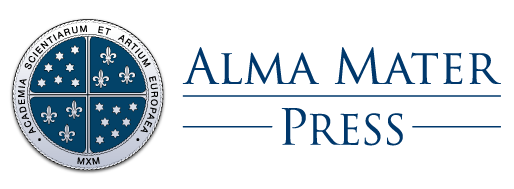Alexander on a White Horse
DOI:
https://doi.org/10.33700/1580-7118.20.1.7-31(2018)Keywords:
Alexander Fyodorovich Kerensky, Russian Revolution 1917, temporary government, Bolsheviks, October Revolution coup d’étatAbstract
The paper discusses various interpretative strategies and narratives applied to the role which was played by Alexander Fyodorovich Kerensky (1881–1970) in the Russian Revolution. It critically evaluates views of the provisional government’s president as a non-radical revolutionary, whose work called for an upgrade in a ‘second revolution’, as well as the interpretation which makes him out to have been a counter-revolutionary at his core. Tracing the causes of his actions in 1917 to his personality traits, the study arrives at the conclusion that Kerensky was a revolutionary of an entirely different breed from those who removed him from power in October 1917; for him, the ‘first revolution’ was enough. The contribution also examines those of Kerensky’s actions which benefited his left-wing opponents, particularly his policy of disassembling the government apparatus out of fear of the right-wing enemy.
Downloads
References
ABRAHAM, R. (1987): Alexander Kerensky. The First Love of the Revolution, London, Sidgwick & Jackson.
BARRETT, M. B. (2008): Operation Albion. The German Conquest of the Baltic Islands, Bloomington, Indianapolis, Indiana University Press.
BRITOVŠEK, M. (1980): Carizem, revolucija, stalinizem. Družbeni razvoj v Rusiji in perspektive socializma. I. knjiga, Ljubljana, Cankarjeva založba.
BROWDER, R. P., KERENSKY, A. (1961): The Russian Provisional Government 1917. Documents. Volume III, Stanford, Stanford University Press.
BRÜNING, H. (1970): Memoiren 1918–1934, Stuttgart, Deutsche Verlags- Anstalt.
BUTTAR, P. (2017): The Splintered Empires. The Eastern Front 1917–21, Oxford, New York, Osprey Publishing.
ENGELSTEIN, L. (2018): Russia in Flames. War, Revolution, Civil War 1914 – 1921, New York: Oxford University Press.
FIC, V. M. (1998), The Rise of the Constitutional Alternative to Soviet Rule in 1918, Boulder: East European Monographs.
FIGES, O., KOLONITSKII, B. (1999): Interpreting the Russian Revolution. The Language and Symbols of 1917, New Haven, London, Yale University Press.
GLEASON, W. (1983): Alexander Guchkov and the End of the Russian Empire, Philadephia, The American Philosophical Society.
GOLDER, F. A. (1927): Documents of Russian History 1914–1917, New York, The Century.
HÖRSTNER-PHILIPPS, U. (1998): Joseph Wirth 1879–1956. Eine politische Biographie, Paderborn, München, Dunaj, Zürich, Verlag Ferdinand Schöningh.
KARLINSKY, S. (1985): Marina Tsvetaeva. The Woman, Her World, and Her Poetry, Cambridge, Cambridge University Press.
KATKOV, G. (1980): The Kornilov Affair, London, New York, Longman.
KERENSKY, A. (1934): The Crucifixion of Liberty, London, Arthur Barker.
KERENSKY, A. (1966): Russia and History’s Turning Point, London, Cassell.
LEHOVICH, D. V. (1974): White against Red. The Life of General Anton Denikin, New York, W. W. Norton.
MASER, W. (1990): Friedrich Ebert. Der erste deutsche Reichspräsident, Berlin, Ullstein.
MCMEEKIN, S. (2017): The Russian Revolution. A New History, London, Profile Books.
MILIUKOV (= MILJUKOV), P. N. (1967): Political Memoirs 1905–1917, Ann Arbor, The University of Michigan Press.
MILJUKOV, P. N. (1939): Istorija Rusije, Beograd, Narodna kultura.
MUNCK, J. L. (1987): The Kornilov Revolt. A Critical Examination of Sources and Research, Aarhus, Aarhus University Press.
NIKITIN, B. V. (2015): Rokovye gody, Sankt Peterburg: Piter.
PATCH, W. L. (1998): Heinrich Brüning and the Dissolution of the Weimar Republic: Cambridge, Cambridge University Press.
PIPES, R. (1991): The Russian Revolution, New York, Vintage Books.
PIPES, R. (2003): Vixi. Memoirs of a Non-Belonger, New Haven, London, Yale University Press.
POKROVSKI, M. N., Jakovljev, J. A. (1930): Vserossiiskoe učreditel'noe sobranie. Dokumenty i Materialy, Moskva, Leningrad: Centrarhiv.
RABINOWITCH, A. (1991): Prelude to Revolution. The Petrograd Bolsheviks and the July 1917 Uprising, Bloomington, Indianapolis, Indiana University Press.
RABINOWITCH, A. (2007): The Bolsheviks in Power. The First Year of Soviet Rule in Petrograd, Bloomington, Indianapolis, Indiana University Press.
RABINOWITCH, A. (2017): Boljševiki prihajajo na oblast. Revolucija leta 1917 v Petrogradu, Ljubljana, Sophia.
RADKEY, O. H., Russia Goes to the Polls. The Election to the All-Russian Constituent Assembly, 1917, Ithaca, London, Cornell University Press, 1989.
SANBORN, J. A. (2015): Imperial Apocalypse. The Great War and the Destruction of the Russian Empire, Oxford, Oxford University Press.
SERVICE, R. (2017): The Last of the Tsars. Nicolas II and the Russian Revolution, London, Macmillan.
SMELE, J. D. (2015): Historical Dictionary of Russian Civil Wars, 1916–1926. Volume I, Lanham, Boulder, New York, London, Rowman & Littlefield.
SMITH, D. (2016): Rasputin. Faith, Power, and the Twilight of Romanovs, New York, Picador.
SMITH, S. A. (2017): Russia in Revolution. An Empire in Crisis, 1890–1928, Oxford, Oxford University Press.
TROTSKY, L. (2008): History of the Russian Revolution, Chicago, Haymarket Books.
VARNECK, E., FISHER, H. H. (1935): The Testimony of Kolchak and Other Siberian Materials, Stanford, London, Oxford, Stanford University Press, Humphrey Milford, Oxford University Press.
WINKLER, H. A. (1998): Weimar 1918–1933. Die Geschichte der ersten deutschen Demokratie, München, Verlag C. H. Beck.
ŽIVANOV, S. (2009): Rusija 1917. Od pada samodržavnog Carstva do proglašenja demokratske republike I, Beograd, Nolit.
ŽIVANOV, S. (2012): Crveni oktobar. Tom prvi: Oktobarska revolucija, Beograd, Službeni glasnik.

